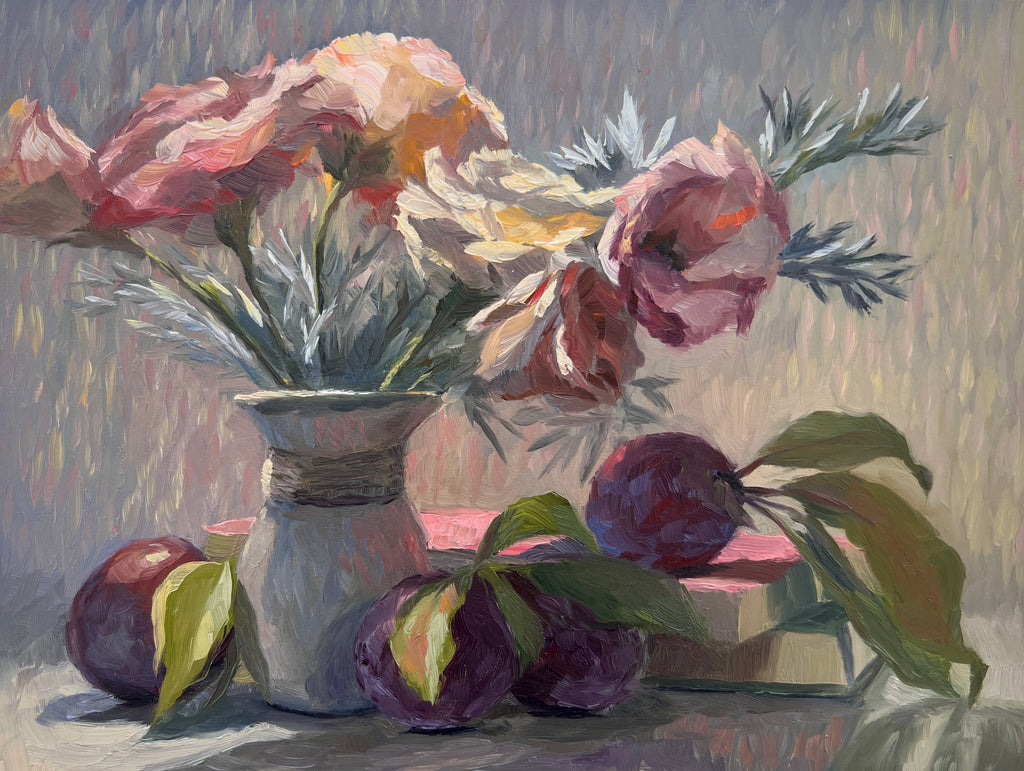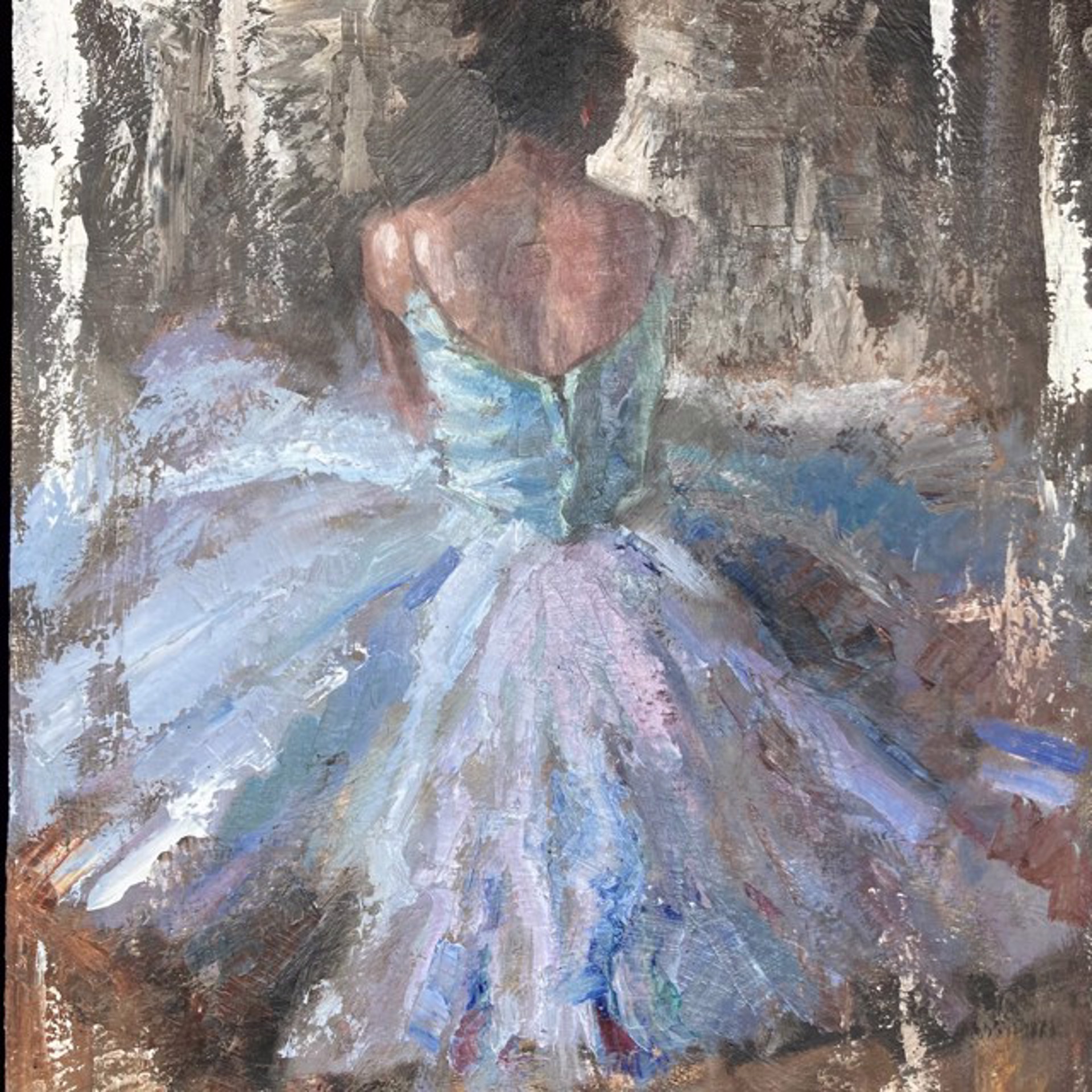Reasonably Priced Contemporary and Traditional Oil Paintings for Sale
Reasonably Priced Contemporary and Traditional Oil Paintings for Sale
Blog Article
Checking out All Regarding Oil Paintings: A Guide to Recognizing Their Appeal and Worth
Oil paintings have captivated audiences for centuries, supplying a peek into the creative mastery of various periods. Their rich history is linked with cutting-edge strategies and extensive emotional expression. Recognizing the products and approaches behind these art work can enhance gratitude. Additionally, the marketplace for oil paintings provides opportunities for collectors and investors alike. As one explores this interesting world, the inquiry arises: what makes an oil painting really beneficial?
The History of Oil Painting: A Journey Through Time
Although oil painting has roots that date back to old times, it truly prospered throughout the Renaissance, when musicians discovered its flexibility and rich color capacity. Early examples can be mapped to the 7th century, with strategies progressing especially across societies. The tool became prominent in Northern Europe in the 15th century, specifically through the works of musicians like Jan van Eyck, that pioneered its use for thorough realistic look and vivid tones. This duration noted a separation from tempera paints, permitting greater depth and structure. As oil paint spread, it affected countless musicians, bring about work of arts by distinguished numbers such as Leonardo da Vinci and Rembrandt. The tool's legacy proceeds, shaping the art globe well right into modern times.
Understanding Oil Paints: Materials and Techniques
As musicians discover the world of oil paints, they encounter a varied variety of materials and techniques that define this medium. The primary components of oil paint include pigments, which provide shade, and drying out oils, such as linseed, that bind the pigments and assist in application. Various ingredients can customize the paint's appearance and drying time, enhancing versatility. Strategies like glazing, where transparent layers are constructed up, and impasto, which involves applying thick paint, permit various visual effects. In addition, the usage of brushes, scheme knives, and even fingers can develop unique textures and surfaces. Understanding these methods and products makes it possible for artists to totally share their creative thinking and accomplish the preferred effect in their art work.
The Role of Shade in Oil Paintings
Color plays a pivotal function in oil paintings, affecting both aesthetic appeal and psychological vibration. Comprehending color concept fundamentals, consisting of the connections between shades, can enhance an artist's ability to convey state of mind and environment. In addition, mastering shade blending techniques enables for better deepness and splendor in a paint's palette.

Color Theory Essential
Comprehending color theory is crucial for artists functioning with oil paints, as it develops the foundation for developing visually appealing and harmonious make-ups. Shade concept incorporates the research study of how shades connect, the shade wheel, and the partnerships between key, second, and tertiary shades. Musicians utilize complementary shades to boost contrasts and produce focal points, while analogous colors advertise unity and cohesiveness within an item. Additionally, the principles of cozy and amazing shades influence the perception of deepness and area in a paint. Understanding these concepts permits musicians to control shade efficiently, leading the customer's eye and interacting their desired message. Proficiency of color concept inevitably improves a musician's capacity to share feelings and concepts with their job.
Psychological Impact of Color
The emotional influence of color in oil paintings plays a critical function in how audiences regard and link with art work. Colors stimulate certain feelings and state of minds, influencing the customer's mood. Cozy tones like reds and oranges can create a sense of heat and power, while awesome tones such as blues and greens frequently evoke peace or introspection. Artists purposefully select shade palettes to boost narrative aspects, directing the target market's psychological trip. The saturation and contrast of colors better enhance these impacts, drawing focus and developing emphasis. Eventually, the interplay of colors in oil paints not just boosts their visual allure yet likewise functions as an effective medium for psychological expression, improving the visitor's experience and analysis.
Color Mixing Techniques
While numerous aspects of oil painting add to the overall structure, grasping shade mixing techniques is crucial for attaining preferred impacts and depth. Color blending can be come close to with different methods, consisting of the subtractive and additive processes. Additive mixing involves incorporating colors of light, while subtractive blending counts on pigments, where shades blend to create new tones. Musicians frequently utilize a limited scheme to create unified works, recognizing the partnerships in between main, second, and tertiary shades. Strategies such as glazing and scumbling further boost deepness and brightness. By skillfully mixing colors, an artist can evoke feelings, produce focal factors, and accomplish a feeling of realistic look, ultimately raising the painting's aesthetic and emotional influence.
Famous Oil Painters and Their Iconic Works

Well known for their mastery of color and method, oil painters have produced several of one of the most celebrated art work in background. Renowned musicians like Vincent van Gogh astounded target markets with his stirring brushwork in "Starry Night," while Claude Monet's "Impact, Sunrise" prepared for Impressionism. Leonardo da Vinci's "Mona Lisa" stays an enduring sign of creative brilliant, showcasing his ability in catching human expression. Rembrandt's "The Night Watch" illustrates his ingenious use of light and shadow. Various other remarkable figures include Pablo Picasso, that changed modern-day art with his vibrant trial and error in works like "Les Demoiselles d'Avignon," and Georgia O'Keeffe, whose dynamic representations of flowers and landscapes helped specify American modernism. Each artist's one-of-a-kind style contributed significantly to the oil painting landscape.
How to Evaluate the Top Quality of an Oil Painting
Assessing the quality of an oil paint includes a cautious analysis of craftsmanship techniques, along with an evaluation of color and make-up. Observing brushwork, layering, and the application of paint can disclose the musician's skill level. Furthermore, the interaction of colors and the overall setup of components contribute significantly to the paint's aesthetic value.
Examining Craftsmanship Methods
A meticulous evaluation of workmanship techniques is crucial for determining the high quality of an oil paint. Evaluators should initially take a look at the application of paint; thick, distinctive brushstrokes might recommend a proficient hand, while overly uniform applications could suggest an absence of depth. oil paintings for sale. The layering method is likewise vital; the visibility of lusters and varied density can boost brightness and intricacy. Furthermore, the top quality of the products used, such as the canvas and pigments, plays a substantial duty in durability and general aesthetic. Interest to information in components read more like edges and shifts between shades reflects the artist's dedication to their craft. Ultimately, these strategies contribute to the painting's psychological impact and market price, acting as signs of the artist's ability and intent
Evaluating Color and Composition
While evaluating the top quality of an oil paint, one should focus on the interplay of shade and structure, as these elements are basic to the art work's general influence. Shade selections can stimulate emotions and develop state of mind; therefore, the artist's combination must be taken a look at for consistency and contrast. A well-balanced structure directs the viewer's eye and produces a feeling of unity. Artists frequently employ strategies like the regulation of thirds or leading lines to enhance visual passion. In addition, making use of light and shadow can add depth, enhancing the three-dimensionality of the paint. Ultimately, a successful oil painting weds color and make-up, engaging the viewer and welcoming a much deeper appreciation of the musician's vision and technique.
Taking care of and Preserving Oil Paintings
Appropriate care and conservation of oil paints is crucial for keeping their honesty and long life. To safeguard these art work, it is crucial to display them away from straight sunshine, which can cause fading and discoloration. Preserving a steady atmosphere with regulated temperature level and moisture additional aids in protecting against damages. Cleaning must be done delicately making use of a soft, dry towel, staying clear of any rough chemicals that might hurt the paint or varnish. Regular assessments for signs of deterioration, such as splitting or flaking, are suggested. When keeping or transferring oil paintings, correct extra padding and framework are essential to prevent physical harm. Eventually, attentive treatment adds to the aesthetic allure and value of oil paints in time.
The Marketplace for Oil Paints: Investing and collecting
Comprehending the market dynamics for oil paints is crucial for enthusiasts and financiers alike. The worth of these artworks is influenced by numerous aspects, including the musician's online reputation, historical importance, and existing trends. Enthusiasts frequently look for items that reverberate personally while taking into consideration possible gratitude in worth. Galleries and public auctions offer as primary locations for purchasing and marketing, with prices rising and fall based upon demand and rarity. Purchasing oil paints requires research study into the market, in addition to an understanding of credibility and provenance. Furthermore, arising artists may offer chances for substantial returns, while established names can regulate high prices. Overall, a critical method to collecting can yield both visual enjoyment and financial rewards.

Frequently Asked Inquiries
What Are the Environmental Effects of Oil Paint Products?
The environmental effects of oil paint products consist of the release of volatile organic compounds (VOCs), damaging waste generation, and source extraction for pigments. These elements add to pollution and eco-friendly deterioration, raising concerns among eco conscious artists and consumers.
Exactly How Do Different Canvases Affect Oil Paint Results?
Various canvases influence oil paint results considerably. Texture, absorbency, and surface high quality can modify paint application, drying times, and color vibrancy. Musicians commonly pick particular canvases to accomplish preferred impacts and enhance their imaginative expression.
Can Oil Paintings Be Restored if Damaged?
Oil paints can certainly be brought back if damaged. Specialist conservators make use of different methods to fix splits, clean surface areas, and address discoloration, ensuring that the art work maintains its original appeal and worth for future generations.
What Are the Indications of an Original Oil Painting?
The indications of an initial oil paint consist of visible brush strokes, texture variations, and an irregular canvas weave (oil paintings for sale). Additionally, credibility may be confirmed through provenance, signatures, and the visibility of a varnish layer unique to oil tools
How Has Modern Technology Influenced Modern Oil Painting Techniques?
Modern technology has actually significantly influenced modern oil painting techniques by presenting digital devices for preparation, enhanced materials for structure and longevity, and on-line systems for sharing and selling art, consequently expanding musicians' creative opportunities and audience reach. Oil paint has roots that date back to old times, it truly prospered during the Renaissance, when musicians found its adaptability and abundant color potential. The emotional influence of color in oil paints plays a crucial function in just how customers view and connect with artwork. While lots of aspects of oil painting contribute to the overall composition, understanding color blending techniques is essential for achieving wanted effects and depth. Reviewing the quality of an oil paint involves a cautious evaluation of workmanship strategies, as well as an evaluation of shade and make-up. While assessing the high quality of an oil painting, one must focus on the interplay of color and composition, as these elements are essential to the artwork's general effect.
Report this page